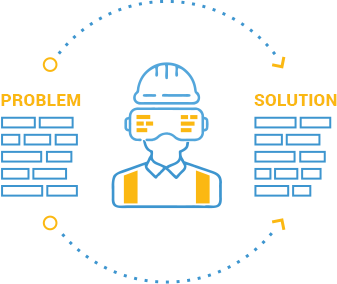The Covid-19 pandemic has acted as a digital accelerator, causing organizations and...

Since the Egan Report was published in 1998, Building Information Modelling has become the foundation of a more collaborative, digitally enabled construction industry, says Nathan Doughty, CEO of Asite
When I studied architecture some years ago, I learnt to draft with pencils, paper and protractors. Once computers were able to transform these physical marks into digital ones, the construction industry began to embrace computer-aided design (CAD). Removing the need to repeatedly draw up new plans made life easier for everyone. But in many respects, these digital markings weren’t all that different from their physical counterparts. In short, they still lacked context and meaning.
That all changed with Building Information Modelling (BIM). It took those digital markings and combined them with concepts from software engineering to create objects that had meaning or data associated with them. In other words, with BIM a window frame is no longer just four borders. It’s also all the non-geometric attributes associated with it: where the material comes from, what the fire rating is for that material and much, much more.
In fact, one window frame could have hundreds of different datapoints associated with it. Furthermore, when you click and drag it from one location to another, it doesn’t just transfer the borders of the frame, it transfers all the associated datapoints too and shows how they interact with the rest of the building.

Building momentum
The transition from CAD to the more detailed, collaborative design processes afforded by BIM was spurred on by the publication of the Egan Report. In the two decades since, BIM has been the catalyst for major changes in the construction industry. Modern, large-scale projects typically involve a vast number of stakeholders and the digital collaboration BIM supports, which Asite was fundamentally established to deliver, is crucial for their success.
The UK Government mandate that all public-funded projects needed to be BIM Level-2 compliant – fully collaborative 3D BIM based on a common data environment – by April 2016 was really the game-changer for industry adoption. In simple terms, it brought together the British Standards Institute, International Organization for Standardization and other bodies, and set a target that anyone tendering for public infrastructure projects, which account for the vast majority of major infrastructure investment in the UK, needed to hit.
It was a big push in the right direction for the industry, which has delivered a lot of benefit in the years since, not least in terms of training.
The cost of training people is one of the biggest challenges when adopting any new technology, especially for smaller companies. They need to be sure of the business case behind the technology to spend tens of thousands of pounds or more on upskilling their team, not to mention the products and software licences themselves. But with BIM, the business case is now clear, particularly when it comes to identifying and addressing mistakes.
All projects have mistakes and the more stakeholders are involved, the more there are likely to be. Collaborative, transparent processes can help to identify them earlier in the project life cycle, which makes them easier and cheaper to address. In a way, it’s similar to the software design process: if you only find a bug after you’ve shipped your code, it’s bound to be a lot harder to fix.

Increasing innovation
When I first joined the construction industry, it was standard for it to take 14 to 21 days for a design to be sent out, reviewed by perhaps five or six different companies, marked up, sent back and consolidated into the next iteration. With the introduction of BIM and other technologies, we’ve obviously moved on from those days. But it does highlight that, traditionally, research and development spending in the construction industry has been pretty lacklustre.
In fact, a recent McKinsey report found it was less than 1% of revenues in 2016, versus 3.5 to 4.5% for the auto and aerospace sectors. In addition, only 1.2% of revenue was allocated for IT in 2019, compared to a 3.5% average across other industries.
Thankfully that’s beginning to change. Major players within the construction industry are ramping up R&D investment and Asite is part of an evolving ecosystem of ConTech companies that are driving digital transformation in our sector. Additionally, the Royal Institution of Chartered Surveyors and other chartered institutes have helped to encourage innovation within construction and bring it closer to the modern, efficient industry envisaged by the Egan Report.
It’s up to all of us in construction to keep this momentum going as we move into the era of artificial intelligence-based collaboration tools and digital twins, interactive digital versions of physical assets, the next chapter of a journey that began, for both myself and the industry, with pen and paper and now encompasses cutting-edge digital technologies. And whatever comes next, we’ll have BIM to thank for providing a strong foundation for the future.

Nathan Doughty
CEO at Asite
3 minute read
Asite Insights in your inbox.
Sign up for product news and our latest insights published monthly. It's a newsletter so hot, even global warming can't keep up.


